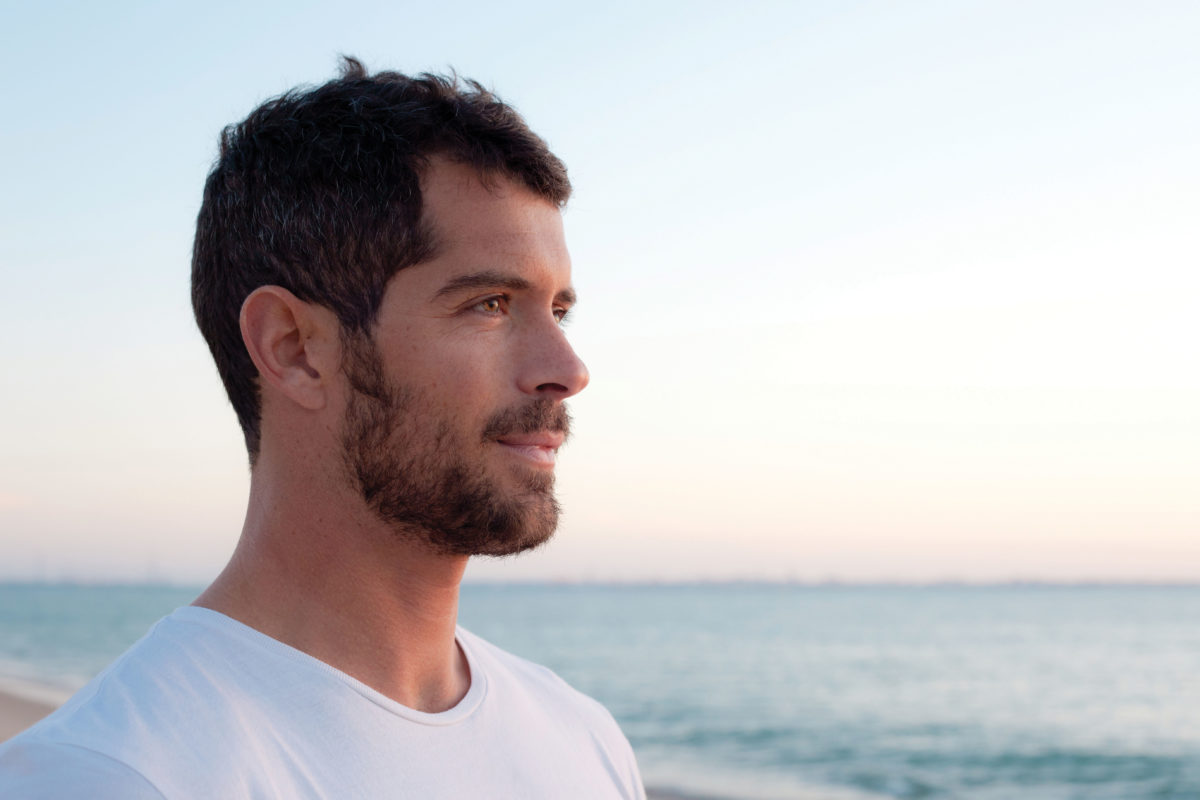A Mindfulness Primer: What, Why and How to Bring More Ease into Daily Life
While this contemplative tradition is allegedly thousands of years old, the practice of mindfulness is a hot topic in current times. There are organizations, websites, magazines, programs, countless books, and even degrees at colleges and universities across America dedicated to the subject
[1, 2].
In fact, a recent study from the Centers for Disease Control and Prevention (CDC) identified meditation (one form of mindfulness practice) as the fastest growing health trend in America. A team of researchers from the National Center for Health Statistics, the National Institutes of Health, and the National Center for Complementary and Integrative Health examined the rise of the most popular complementary practices (yoga, meditation, and chiropractic care) in the US over a five-year period. Of the three main types, yoga is the most popular, but meditation is identified as the fastest-growing trend, seeing a more than threefold leap in users [3].
Life moves pretty fast; if you don’t stop and look around every once and a while, you could miss it.
— John Hughes (1950-2009)
The first in a series, this article aims to explore these questions about mindfulness:
What is it?
Why does it matter?
How do I do it?
What is it?
In its simplest form, mindfulness is paying attention on purpose, with curiosity and nonjudgment. Sounds easy enough, right? (Insert laughy-face emoji here). Were you ever told as a child, “Pay attention!”? Yet…did anyone really teach you how? That’s why techniques for amplifying momentary awareness are often referred to as mindfulness practices. Like any skill, they require time and effort, and get easier with repetition.
Cultivating mindful awareness means deliberately noticing your experience as it unfolds – what is happening in your body and where (use your senses as a guide…what do you see, smell, hear, taste and feel, physically?), as well as what emotions are arising and the tone of these feelings. You might also become aware of any stories attached to a particular sensation or sentiment; the emphasis is on what is happening, not why it is happening.
While certain mindfulness practices, like meditation, warrant a quiet place where you won’t be disturbed, many can be performed while you are going about your daily life – standing in lines, sitting in your car or a waiting room, walking to the mailbox or loading the dishwasher. There is no right or wrong, good or bad; it is an experiential process…your only job is to notice. The quality of attention is more important than the object of attention.
Why does it matter?
By nature and evolution we are thinking beings, to the tune of 60,000 thoughts a day – a large percentage of which are the same as we had the day before. The way that we are wired, our minds are prone to recognize, focus on, and remember the negative events of our lives more than the positive ones. We naturally tend to play the adverse experiences, hurtful comments, and undesirable situations on Repeat, downplaying the serendipitous encounters, uplifting acknowledgements, and moments of peace and gratitude. Without consciously attending to our thoughts, the negative ones are like Velcro, the positive ones like Teflon.
Consider how often minor daily stresses affect your thoughts and emotions, which in turn affect your body. You may feel tension arise while waiting in a check-out line, driving in traffic, facing a deadline, or having an uncomfortable conversation. You may even experience a stress reaction as a result of anticipating or remembering an event. Though these stresses seem fairly minor, they can evoke a host of symptoms including muscular tension, headaches, insomnia, gastrointestinal upset, and skin conditions.
Stressful circumstances, however minor, are interpreted by our nervous system as perceived threat, and the body responds in similar fashion to the life-threatening dangers of primitive man:
- the hormones cortisol and adrenaline are released to prepare for fight-or-flight
- heart rate and blood pressure surge
- blood is moved from digestive organs to the arms and legs for mobilization
- clotting occurs more quickly to prevent blood loss from injuries
- blood sugar rises to furnish more fuel for energy
- regenerative processes are put on hold
- reproductive urges and capabilities dwindle as they aren’t required to deal with immediate threat
- the immune system is suppressed, compromising our ability to fight disease.
The brain does not distinguish between psychological and physiological danger. When we ruminate or worry excessively about something – our vehicle’s check engine light comes on; our child gets a bad grade; someone we love receives a medical diagnosis – we turn on the same physiological responses as would occur in the face of physical danger. Prolonged stress responses can be a factor in serious conditions like cancer, heart disease, dementia, and depression, particularly if employing unhealthy coping strategies such as smoking, substance abuse, overeating, overworking, or general busyness [4].
The evidence base for the therapeutic benefits of mindfulness practices is extensive, and growing all the time, including:
- navigating the effects of stress, both acute and chronic
- reduced anxiety
- increased body satisfaction, self-compassion
- improved cognition, sustained attention
- reduced distractions and biases toward the negative
- preventing or treating depression, when combined with therapy
This understanding offers us an opportunity to evolve. One thing that sets us apart from other mammals is our ability to think about what we think about. This ability, known as metacognition, is nothing short of a super-power! It enables us to pay attention to what is occurring in our immediate experience with care and discernment – to notice what we notice. It is not a passive resignation, rather, it helps us see clearly which experiences lead to greater suffering for oneself and others, and which do not [5].

How do I do it?
When we approach mindfulness practice with the intention of developing a gentle relationship with our own mind, we are cultivating an important insight: thoughts are not the world. Thoughts are thoughts; they continually arise in the form of mental talk (inner dialogue) and mental images and fall away. It may be encouraging to acknowledge that mind-wandering is not only normal, but can facilitate creativity, help us plan, and mitigate mental boredom. It is when we are continually preoccupied with past occurrences, engrossed in future plans, or simply operating on autopilot for the majority of our time, zoning out of the small, everyday experiences that add color and texture to our lives, where the gifts of mindfulness can become transformational.
There are innumerable ways to engage in mindfulness practice. Mindful awareness applied to any activity – breathing, eating, walking, seeing, touching, communicating, sensing, gratitude, and more – can enhance the experience and add richness to our lives. The focus is non-judgmental awareness of the present moment. Especially for beginners, the key to effective practice is using an anchor to draw your attention back to the present moment when the mind wanders, which it will. Common anchors used in mindfulness practice are: breath, words and sound.
Breath as an Anchor
Picture a small boat, floating in the water, wandering this way and that with the direction of the wind. It will continue in this manner until we drop an anchor to steady our position. We can liken our mind to the boat, and our breath to the anchor. Each time the mind wanders off into thought, as an intentional practice, we gently guide the mind back to the breath.
Step 1: Preparing for Practice
Find a quiet place in your house, at work, or outside where you’re unlikely to be distracted or interrupted. Set a timer for the duration you wish to practice (start with 2-5 minutes and add a minute each week). Sit in a chair with both feet flat on the ground and your back straight but not stiff (use a pillow for support if necessary). The goal of the posture is to create a good balance between relaxation and alertness. Rest your hands pinky side down on your lap, keeping the elbows by your side. Feel your feet connected to the earth and take a few deep breaths to settle the body-mind, inhaling through the nose, exhaling through the mouth.
Step 2: Cultivate Curiosity & Compassion
Approach your practice with a sense of curiosity and compassion, noticing what arises, such as thoughts or bodily sensations. It’s about practice, not perfection. Know that your mind will wander; the goal isn’t to get it to stop wandering – it’s to bring it back. Each time your mind wanders and you bring it back to your anchor (in this case, your breath), it’s a rep – like a repetition during a workout. You’re working out your mind…catching yourself when your mind wanders and bringing it back to your breath is one repetition.
Step 3: Use Sensation to Stay Present
Continue to purposefully focus your attention on your breath – the temperature of the air as it enters the body, and if or how it is different as it exits; notice the expansion of the rib cage as the diaphragm descends, the contraction as it returns. Pause momentarily at the bottom of the exhale, allowing the impulse to take another breath arise, and responding accordingly. Each time the mind wanders into thought, softly guide it back to your breath sensations until your timer signals the end of this practice.
Experiment with Other Anchors
Using the basic practice described above, experiment with using other anchors and determine which one(s) best support your capacity to develop an abiding presence.
- Breath-counting – As you complete an exhale, count each breath. See how many breaths you can take before realizing you’ve wandered off, or you might notice that you were on breath 12 without being aware of the numbers that came before it.
- Repetition – Actively repeat a neutral word or phrase at the end of each breath, such as “One” or “Here now.” Much like putting a monkey on a pole, this gives our ‘monkey mind’ something to focus on, inhibiting its tendency to wander.
- Senses – Choose one sense to focus on, such as Sound, and acutely tune your awareness to every sound you here for the duration of your practice. Notice the layers of what you hear, how some are closer up, some farther away. You can also combine this with a word, such as “hearing” or “sound.”
Mindful awareness has specific qualities that differentiate it from simple attentiveness. It is the intention to be attentive, the openness to being present and honest with what is happening in the moment and observing what is happening rather than trying to control experience [6].
Remember, this is a practice, it is not perfect, and never will be. Mindfulness is not a quick fix; practicing entails repetition, time and effort. Ultimately, mindfulness is about our well-being, and the well-being of those around us, and the planet which supports our life. It’s a way of understanding the causes of happiness, and the causes of stress and dissatisfaction. Integrating mindfulness into your life can facilitate transformational change, one practice, one breath at a time.
Instructor Kelli Anders holds a Master of Science in Yoga Therapy. With over 1,000 hours of training, she is certified with the International Association of Yoga Therapists (C-IAYT), a Registered Yoga Teacher (RYT) with Yoga Alliance, and a certified Standup Paddleboard (SUP) fitness and yoga instructor.
Learn more about Kelli’s Yoga Therapy practice, series, workshops and group classes at facebook.com/balancedyogaandwellness
or email her at kelli@balancedyogawellness.com.

References
[1] http://www.masters-in-psychology.net/30-colleges-leading-the-way-in-meditation-for-mental-health/
[2] http://www.contemplativemind.org/resources/study
[3] https://www.mindful.org/meditation-is-the-fastest-growing-health-trend-in-america/
[4] Stahl, B. & Goldstein, E. (2010). A Mindfulness-Based Stress Reduction Workbook. Oakland, CA: New Harbinger Publications, Inc.
[5] Shapiro, S. & Carlson, L. (2009). The Art & Science of Mindfulness: Integrating Mindfulness Into Psychology and the Helping Professions. Washington, DC: American Psychological Association.
